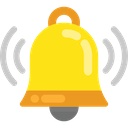I would remove the input flange and the bearing cone if you can. Spray solvent into the other bearing and turn the shaft back and forth.
If you can't clear up the tight spot that way, I'm afraid the internals have to come out. The input cone can be removed (obviously), but the cup can't, and they should be replaced as a set. And the head bearing is a more likely failure (it takes a lot more load).
I had a somewhat similar experience a few years back, with a Stag differential (surprisingly similar to the TR unit internally) that was supposedly rebuilt. Kept trying to convince myself that the tight spot was just a packing peanut gone astray, but this is what I found when I got it apart.
You can build a spreader as shown in the book; or what I did was to just pry the carrier out
(note the pieces to protect the sealing surfaces)
But before doing that, I suggest blueing one of the gear teeth to study the contact pattern
You will want to duplicate this when you put it back together. The new bearings may or may not be the exact same dimension as the old ones, so you'll have to at least check and probably adjust the shim pack for any bearing you replace. It's actually very hard to pull the bearings without damaging the shims (and any visible damage means it must be replaced, even the slightest crease will change the thickness enough to matter), so plan on replacing all of them.
You have the right to hope that the carrier bearings are OK; if so then you can duck having to select shim packs for each of them. They lead a pretty easy life, so I'd leave them alone if you can't see anything wrong.
But the thrust washers are probably worth replacing just because. They don't affect the shim packs, are cheap, and do wear out over the miles.
I put a few more photos up at
https://imgur.com/a/WRu29
that might help.

 Hi Guest!
Hi Guest!

 smilie in place of the real @
smilie in place of the real @
 Pretty Please - add it to our Events forum(s) and add to the calendar! >>
Pretty Please - add it to our Events forum(s) and add to the calendar! >> 




